-
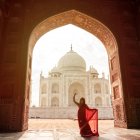 Embark on a Journey to Discover India. Your Guide to the Best Places to Visit in India in Every Season (2020)
Embark on a Journey to Discover India. Your Guide to the Best Places to Visit in India in Every Season (2020)
-
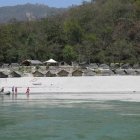 Lose Yourself in the Wild Beauty of River Ganges the Right Way by Camping at Rishikesh: 10 Campsites for an Adventurous Camping Experience!
Lose Yourself in the Wild Beauty of River Ganges the Right Way by Camping at Rishikesh: 10 Campsites for an Adventurous Camping Experience!
-
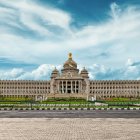 Planning to Visit India's Silicon Valley? Fun Things to Do in Bangalore to Get the True Flavour of this Happening City (2020)
Planning to Visit India's Silicon Valley? Fun Things to Do in Bangalore to Get the True Flavour of this Happening City (2020)
Pune - Queen of the Deccan
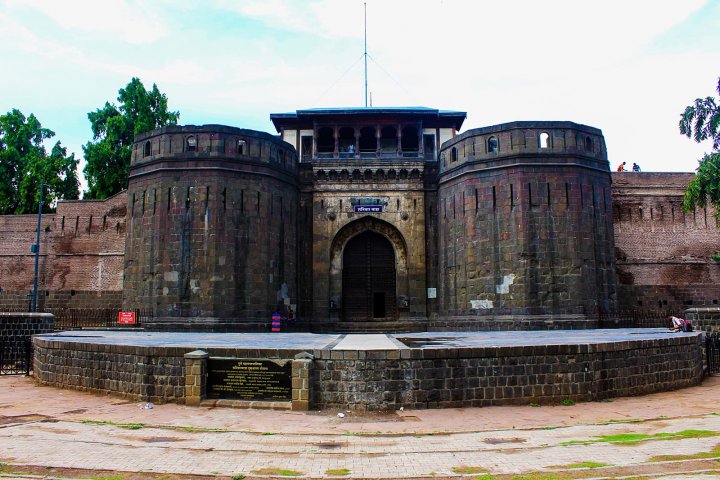
Pune is a city that is located in the state of Maharashtra and is fondly called as the ‘Queen of the Deccan’. The city was the political capital of the great Peshwas and home to numerous historical monuments. Pune is a tourist hub with historical charm and modern facilities. It is also famously called the ‘Oxford of the East’ as it boasts of numerous educational institutions. It is located 560 meters above sea-level on the Western side of the Deccan Plateau. The two rivers Mula and Mutha run through the city as the major water source. Pune comprises of three cantonment areas that were established during the British reign.
Historical Places in Pune
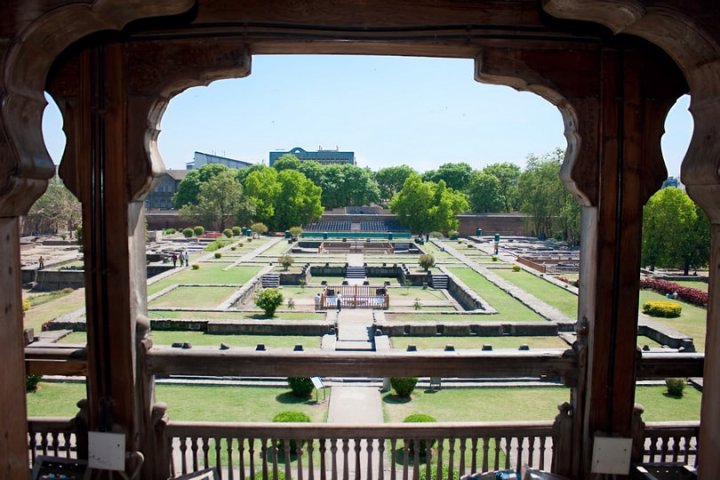
There are numerous historical locations in Pune such as Shaniwar Wada, Aga Khan Palace, Pataleeshwar temple, Shigabad fort, Lal Mahal, etc. These monuments stand testament to the Peshwa rule and its magnificent architecture. However, the cantonment areas, bungalows and manicured gardens stand testament to the British rule in India. The city is a cultural amalgamation and the various museums present in the city prove this fact. The famous museums present in the city are the Raja Dinkar Kelkar Museum, Mahatma Phule industrial museum, Miniature railway museum, tribal museum, and the world’s largest cricket museum. It also has a fair share of greenery that complements its modernity. The Rajiv Gandhi zoological park is located in the heart of the city. The garden such as Kamala Nehru Park, Shahu Udyan, Peshwe Park, Empress gardens, and the Bund gardens are some of the famous parks located in the city.
How to Get Around in Pune?
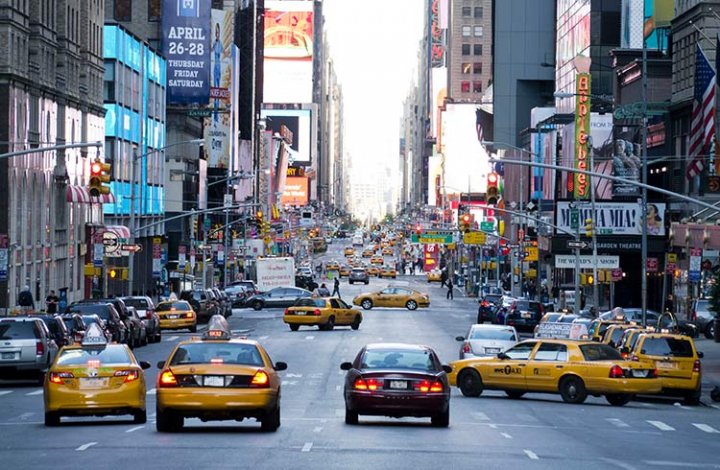
The city has various public transport systems namely - bus, rail services, taxi, and auto rickshaws. Moreover, it is well-connected via state and national highways. The most easily available transportation is by bus with numerous public and private buses plying towards various parts of the city. Also, the Pune suburban railway connects various cities and suburbs in Pune. As of 2019, a Metro railway transit is under construction and is expected to be completed soon. It is also connected by air and has two airports Pune airport and a newly proposed Chhatrapati Sambhaji Raje International Airport. The most common transport system opted by tourists in Pune are cabs and auto-rickshaws. The weather is generally hot in Pune owing to its mountainous terrain ranging from April to June. The monsoons are also the best time to visit since the areas such as Singhabad fort are frequently visited during monsoon to witness the waterfalls. The best time to visit Pune is from October to February when the weather is cool and enjoyable.
Top Ten Places to Visit in Pune
1. Shaniwar Wada Fort
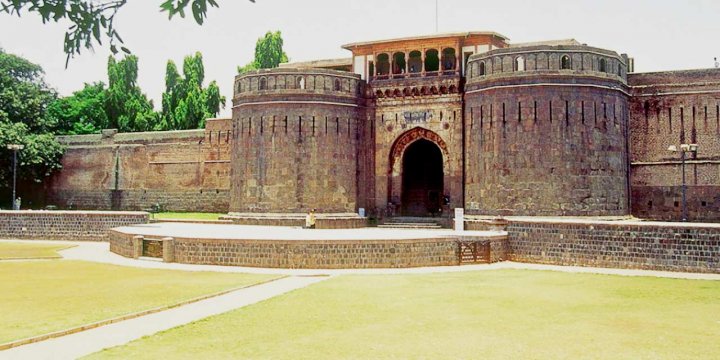
Shaniwar Wada is a historical fortification present in the city of Pune. The historical monument was also the seat of the Peshwas till 1818. After the defeat of the Peshwas, the fort became the head of Indian political. The foundation for the fort was laid by Peshwa Baji Rao I and was named Shaniwar Wada which means Shaniwar(Saturday) and Wada(Complex) in Marathi. Initially, the complex has seven stories among which the base was built using stone while the remaining floors were built using bricks. However, in 1818 the fort was attacked by the British East India Company. The heavy artillery damaged all the stories while the base was undamaged since it was made of stone. The fort complex comprises of five gates called Dilli Darwaza, Mastani Darwaja, Khidki Darwaja, Ganesh Darwaza and Jambhul Darwaza. During its peak years, the fort consisted of a Naachacha Diwankhana(Dance Hall), Juan Arsa Mahal(Old Mirror Hall), carved teak arches, ornamental teak pillars made of cypress tree, beautiful carved teak arches, carved creepers, walls with painting off historical epics, a majestic lotus-shaped fountain, and elegant gardens. However, a great mysterious fire erupted on 27th February 1828, the fire raged for seven days and destroyed the majority of the complex. Only the stone, heavy granite, teak gateways, and stone pillars survived the great fire. It is a must to visit the majestic fort and revel in the history of the Peshwas.
2. Aga Khan Palace
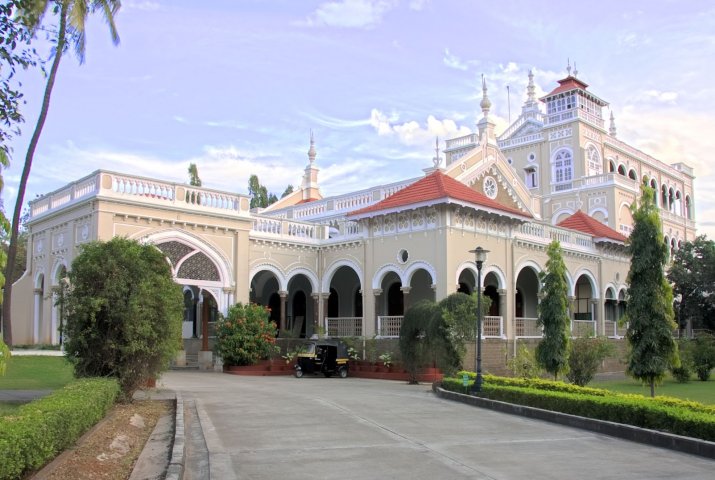
A beautiful palace located in Pune and built by Sultan Muhammed Shah Aga Khan III in 1892. The beautiful palace has a rich cultural history and associated with the Indian Freedom Movement. This was the place where Mahatama Gandhi was held as a prisoner and also the place was his wife Kasturbai breathed her last. The palace was built by the Sultan to help provide an employment opportunity for people hit by famine. The palace is built over 19 acres with Italian arches and majestic lawns. The visitors visiting the palace are captivated by its elegant architecture and artwork. It was donated to the Indian government by Aga Khan IV in 1969 in the memorial of Mahatma Gandhi. The palace now serves as a museum that showcases the life of Gandhi through photo archives, and portraits. Moreover, various events are held in the palace to commemorate the various events held in honour of Gandhi. Its historical significance was further cemented when the Archaeological Survey of India declared it as a historical monument in 2003.
3. Shingabad Fort
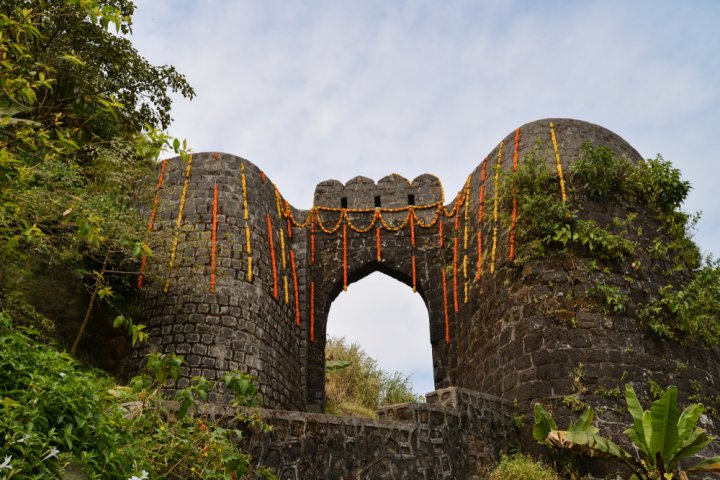
A historical hill fortress built on the outskirts of Pune around 2000 years ago. The majestic fort is located at 760 meters above ground on an isolated cliff located on the Sahyadri mountain range. The Shingabad Fort means ‘Lion’s Fort’ in Marathi and its steep slopes provide natural protection for the fort. The fort comprises of only two entrances - Kalyan Darwaza and Pune Darwaza that are hard to gain entry. In 1328 AD, the fort was seized from King Nag Naik by Muhammad Bin Tughlaq. Later, the fort was again conquered by the Marathas under the behest of Chhatrapati Shivaji Maharaj. The famous battle of Shingabad signifies the battle fought to recapture the fort from the Mughals. There was an ongoing tussle between the Marathas and Mughals to capture the fort. Finally, in the year 1818, it came under the control of the British. The fort is a famous tourist attraction in Pune and various trekking enthusiasts scale the mountain to reach the fort. The fort complex comprises of a memorial built for Chhatrapati Shivaji Maharaj, military stables, brewery, hanuman temple, and kali temple. While visiting the fort, one can taste the local delicacy ‘Kanda Bhaji’ that is available in eateries located near the fort.
4. Rajiv Gandhi Zoological Park / Katraj Snake Park
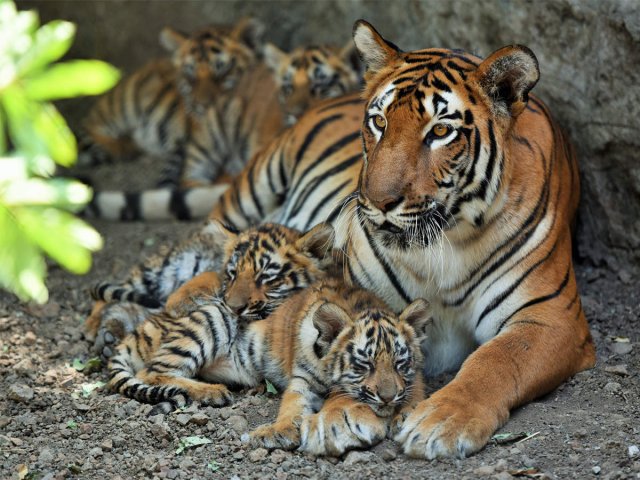
A renowned park located over 130 acres near Katraj lake and located in the heart of the city. The zoo is managed by the Pune Municipal Corporation and comprised of three categories - zoo, snake park, and animal rescue and adoption. The park was established in 1953 and was renamed as Rajiv Gandhi Zoological park in 1999. After it became a national park, various animals were added to it. Currently, the zoo has a collection of mammals, reptiles, and birds. It is also home to a white tiger, male Bengal tiger, and Asiatic lions. Also, it houses other mammals such as sloths, leopards, barking deer, monkeys, and elephants. Additionally, the park is also home to a variety of reptiles such as the King cobra, vipers, and crocodiles. The zoo runs an animal rescue and an adoption center to rescue wild animals and to rehabilitate them. Moreover, visitors also have the option to adopt an animal and to maintain it. The park conducts various workshops, educational activities, tree planting initiatives, environmental cell, and garden maintenance.
5. Raja Dinkar Kelkar Museum

The museum was built in the memory of the Dr.Kelkar’s only son Raja who died an untimely death. The museum is home to a collection of some of the rarest historical artifacts. The museum is comprised of nearly 22,000 rare artifacts that are native to India. All the artifacts present in the museum were personally collected by Dr.Kelkar who travelled to the nooks and corners of India to procure them. It also consists of ornaments made of ivory, silver, and gold and also musical instruments from various villages and tribal settlements in India. The artifacts are made by expert craftsmen who have made them using stones, woods, metal, ivory, fabric, and clay. There are thousands of daily artifacts such as lamps, carved woodwork, tinware, spittoons, musical instruments, miniature paintings, glass art, containers made of limestone, bronze figurines, arms, armours, and kitchen utensils. Moreover, the museum complex houses a structure of the Mastani Mahal that depicts the love story of Bajirao Peshwa I and his wife Mastani. As a personal gesture, Dr.Kelkar donated all his collections to the state in 1975 and was honoured by the Government of India.
6. Rajgad Fort
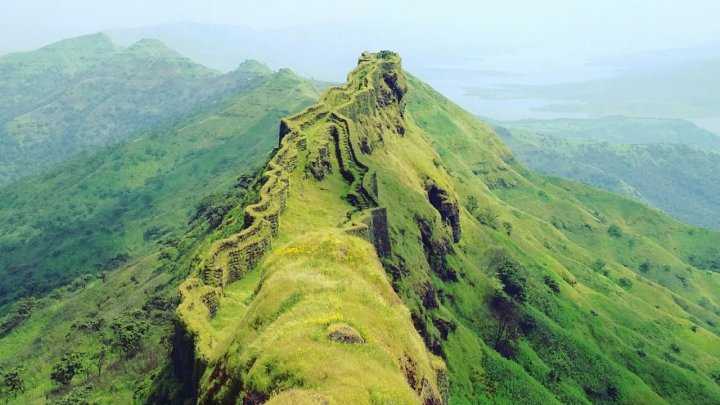
The Rajgad Fort means ‘Ruling Fort’ in Marathi is located on top of the Sahyadri mountain range. The fort is located on a hill and was the capital of the Maratha Empire under the tutelage of Chatrapati Shivaji for 26 years and is located at a height of 1,376 meters. The fort is very crucial and has a significant role in the Maratha empire. It is said that the fort was constructed from the treasures retrieved from the Torna fort located adjacent to it. It is a perfect getaway and tourists flock to the area during the monsoon season. It is divided into four major areas - Padmavati Machee, Pali Darwaza, Suvela Machee, and Balekilaa. Avid trekkers and tourists visit the fort and prefer to stay overnight since it is extremely vast to cover it in a single day. The complex is home to the ancient Padmavati temple, palaces, water cisterns, and caves. The legendary palace can be reached through air, train or bus. Plan a visit to this legendary during the monsoon season to experience royalty above the clouds.
7. Pataleshwar Cave Temple
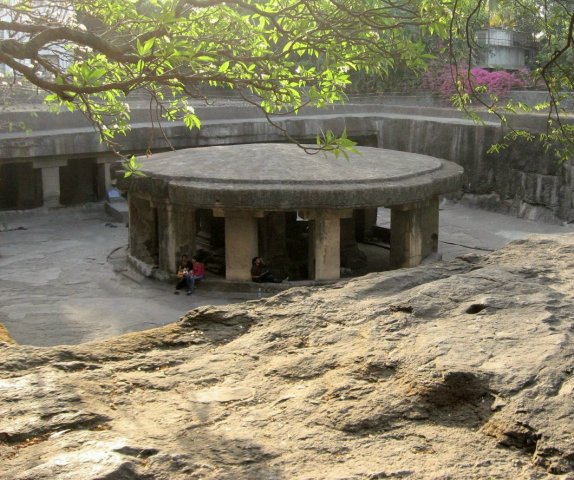
Also called as the Panchaleshvara is a rock-cut temple built during the 8th-century Rashtrakuta period. The temple is carved out of Basalt rock and is built to honour Lord Shiva and Goddess Parvathi. The most unique feature of the temple is the cube-cut Sanctorum that is home to Shiva Lingam. Moreover, the temple comprises of a Nandi mandap that is supported by an umbrella-shaped canopy. The cave temple is located lower than the temple and the complex also houses a Nandi in its huge courtyard. The temple comprises three sanctums and the main one houses the Shiva Linga. However, the temple was left unfinished and it has been attributed to faulty rocks. The walls on the caves are adorned with carvings of stories of Indian Mythology. The temple comprises stone passageways, watercolour pairings, and various deities. There is also a museum present in the premise of the temple and also comprises of an ancient grain of rice that has 5,000 characters inscribed on it is the highlight of the museum. The cave temple can be reached via walk, trek or cab.
8. Mulshi Dam
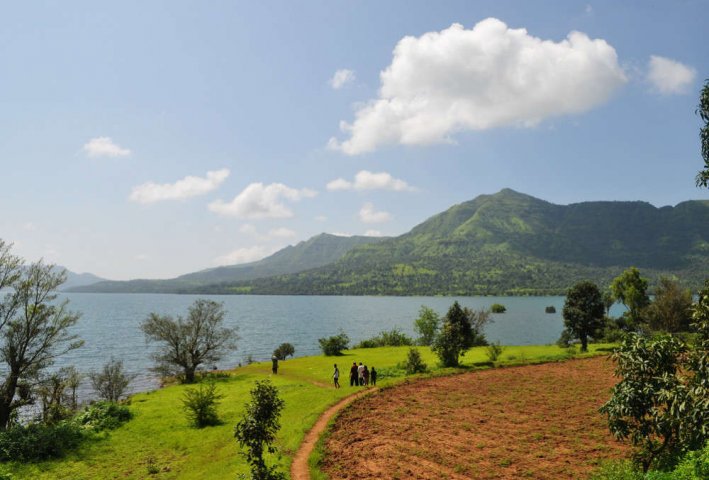
The dam built over Lake Mulshi and is one of the popular camping sites in Pune. Thousands of tourists visit the dam during monsoon to catch a glimpse of the tranquil environment, lush greenery, and a serene lake. Tourists can rent a cottage near the lake and experience nature at its best. The river is an extension of the backwater of the Mulshi dam and is surrounded by lush greenery. It is an eco-friendly tourist destination that is frequented by trekkers, bird watchers, campers and photography enthusiasts. The dam and the surroundings are famous for its wide range of flora and fauna. It also serves as a recreational place where people can go trekking, boating, fishing, crab catching, bullock cart ride and playing cricket. Also, ensure to visit the various places surrounding the dam such as Tamhini Ghat, Andharban Trail point, Temghar Dam, and Kailasgad Fort. One can also learn about various irrigational activities and hydroelectricity projects. Plan a weekend trip with your family and friends to catch the beauty of the dam and the lake.
9. National War Museum
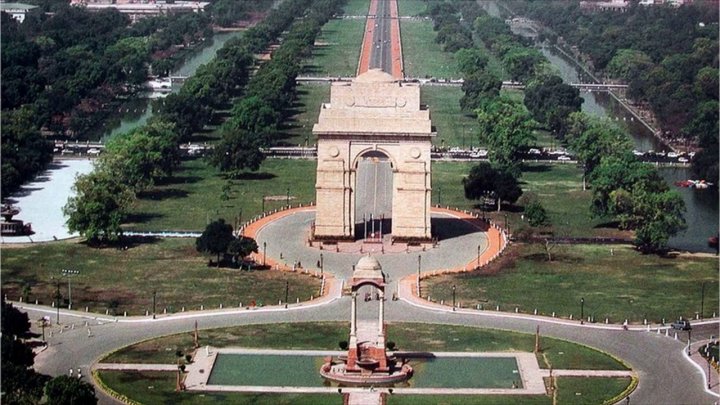
The museum was built to honour the Indian soldiers who lost their lives during the war. The museum is situated in the Pune cantonment area and is home to various war artifacts. The unique feature of this museum is that it was fully erected with the support of public contribution and was opened to the public in 1998. The museum is home to MIG-23BN which was mainly used in the Kargil War. Furthermore, it also comprises of a replica of the frigate INS Trishul that was decommissioned. The frigate was used during the Portuguese-India war and the India-Pakistan war. Moreover, it is encompassed of stone plaques with names of all the martyred Indian soldiers. Visitors can also catch a glimpse of the various war artifacts such as uniforms, war vehicles, flags, photographs, paintings, ammunition, tanks and guns used during the war. Also, children can have fun at the paintball gallery and gun range alley.
10. Adlabs Imagica
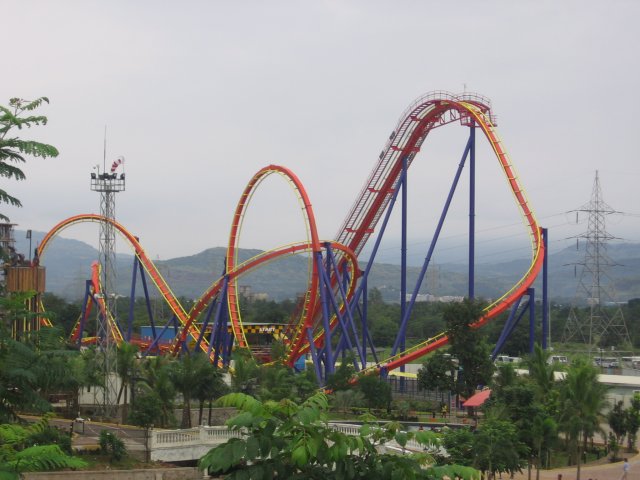
For people who want to experience fun and entertainment, can visit the Adlabs Imagica. The amusement park is one of a kind and can handle 15,000 people in a single time. The amusement comprises three parks namely - theme park, water park, and snow park. The park is also home to various top-notch rides such as Nitro, Deep Space, Scream Machine, Gold Rush, Mr.India, Rajasuras river adventure, Prince the dark waters, Tubby the flying elephant, and much more. Tourists can refresh themselves at one of the restaurants located inside its premises - Roberto’s food court, Imagica capital, Armada, and Zeze bar plus grill. They can also opt to stay overnight at the theme park where a 287-room hotel is located. Moreover, the park has also received numerous national and international awards.
Tips on How to Stay Safe in Pune

- Though Pune is considered to be one of the safest cities in India, some certain precautions and measures have to take to stay safe.
- Stay safe while travelling in private autos and cabs as you may get cheated with high fares.
- Know a few basic words in the native language to communicate and ask your way around the city.
- It is not advisable to stay outdoors late into the night to prevent any untoward incidents.
- Try to avoid having food in roadside eateries as they may affect your health and warrant medical attention.
- Do ample research and plan a detailed travel itinerary before you travel.
-
 समुद्र तट, प्रकृति का जादुई सौंदर्य, अनूठा आकर्षण सब कुछ है - पांडिचेरी यात्रा के दौरान वहाँ क्या देखें, क्या खाएं, कहां खरीदारी करें: पांडिचेरी में घूमने के 10 सर्वश्रेष्ठ स्थान (2020)
समुद्र तट, प्रकृति का जादुई सौंदर्य, अनूठा आकर्षण सब कुछ है - पांडिचेरी यात्रा के दौरान वहाँ क्या देखें, क्या खाएं, कहां खरीदारी करें: पांडिचेरी में घूमने के 10 सर्वश्रेष्ठ स्थान (2020)
-
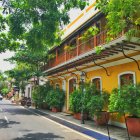 If You are Planning a Trip to Pondicherry in 2020, These are the Places to Visit for Foodies, Beach Bums and Shopaholics!
If You are Planning a Trip to Pondicherry in 2020, These are the Places to Visit for Foodies, Beach Bums and Shopaholics!
-
 Planning to Visit India's Silicon Valley? Fun Things to Do in Bangalore to Get the True Flavour of this Happening City (2020)
Planning to Visit India's Silicon Valley? Fun Things to Do in Bangalore to Get the True Flavour of this Happening City (2020)
-
 Set Your Taste Buds Tingling with a Visit to Bangalore's Food Street: Our Guide to the Ultimate Street Food Destination(2020)
Set Your Taste Buds Tingling with a Visit to Bangalore's Food Street: Our Guide to the Ultimate Street Food Destination(2020)
-
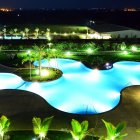 If You’re Thinking for an Outer Trip with Your Loved One the Pearl City First Comes to Mind! 10 Best Resorts in Hyderabad That Provides the Best Luxurious and Heavenly Feeling for Stay (2020)
If You’re Thinking for an Outer Trip with Your Loved One the Pearl City First Comes to Mind! 10 Best Resorts in Hyderabad That Provides the Best Luxurious and Heavenly Feeling for Stay (2020)
Conclusion
There is a lot more to experience in Pune other than these top places which can make your experience a memorable one.
Stop thinking about it and plan your next holiday trip to Pune. And if you recently visited any of these places, then don’t forget to share your experience in the comments section below. Have a great time!

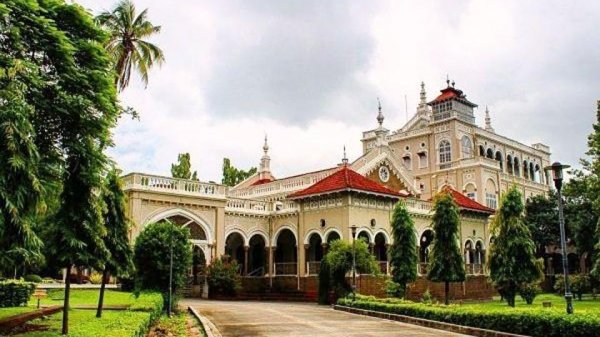
 Highlight the Best Facets of Your Incomparable Beauty: Discover the Best Face Highlighter Currently Available in India and Everything You Need to Know About Using Face Highlighters for Maximum Effect (2023)
Highlight the Best Facets of Your Incomparable Beauty: Discover the Best Face Highlighter Currently Available in India and Everything You Need to Know About Using Face Highlighters for Maximum Effect (2023)
 Forget the Blemishes and Get that Picture Perfect Flawless Radiance on Your Face: Check out the Best Foundations for Oily Skin Currently Available in India and Everything You Need to Know About Makeup Foundations (2023)
Forget the Blemishes and Get that Picture Perfect Flawless Radiance on Your Face: Check out the Best Foundations for Oily Skin Currently Available in India and Everything You Need to Know About Makeup Foundations (2023)
 Make Your Presence Felt Wherever You Go: Discover the Best Perfumes Under 2000 for Both Men and Women to Announce Your Arrival and Make Any Occasion Memorable (2023)
Make Your Presence Felt Wherever You Go: Discover the Best Perfumes Under 2000 for Both Men and Women to Announce Your Arrival and Make Any Occasion Memorable (2023)
 Protect Your Oily Skin from the Harmful Rays of the Sun: Discover the Best Gel Based Sunscreens for Oily Skin and Everything You Need to Know Before Buying One (2023)
Protect Your Oily Skin from the Harmful Rays of the Sun: Discover the Best Gel Based Sunscreens for Oily Skin and Everything You Need to Know Before Buying One (2023)
 Minor Blemishes and Wrinkles Affecting Your Confidence? Check out the Best BB Creams to Conceal Your Worries and Nourish Your Skin to Restore the Healthy, Radiant and Glowing Complexion Back Again (2023)
Minor Blemishes and Wrinkles Affecting Your Confidence? Check out the Best BB Creams to Conceal Your Worries and Nourish Your Skin to Restore the Healthy, Radiant and Glowing Complexion Back Again (2023)
